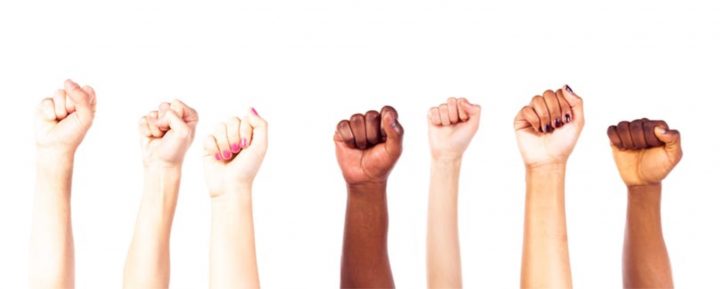Nilufar Ahmed, Swansea University for The Conversation
International Women’s Day 2018 has the theme “press for progress”. It is a “strong call to motivate and unite friends, colleagues and whole communities to think, act and be gender inclusive”.
In the last few months alone, the world has been told loud and clear about the disparities, discrimination, and even danger women face every day. Campaigns such as #metoo and #timesup, which confront the legacy of predatory sexual behaviours which women are exposed to in workplaces, have been fronted by global stars and received worldwide responses and followers.
But the widespread attention has highlighted an important facet that intersects the experiences of women: race. African-American civil rights activist Tarana Burke was the original voice behind the #metoo movement. She first used the hashtag in 2006 to stand against sexual violence against women, particularly underprivileged women whose voices were not heard. But the campaign did not gain the widespread support and attention it has today until it was taken up by celebrities – notably white celebrities.
This issue raises the uncomfortable fact that while the focus is on women battling for equality with men, still not all women are deemed to be equal with each other. When race and ethnicity are added in to the mix, the statistics on gender disparity become even more startling.
Employment
At present, the unemployment rate for white men and women in the UK stands at 4% for each group. But people from BAME backgrounds in the UK are twice as likely to be unemployed (8% for men and 9% for women).
The BAME grouped statistic hides important differences within ethnic groups too. Differences that are influenced by migration histories, cultural practices, and education, as well as the religious discrimination faced by Muslims in the workplace – with Muslim women bearing the brunt of this.
The increase in precarious short term and zero hour contracts also affects BAME employees more than it does white employees. With black women more affected than other ethnic groups.
Women from minority groups also experience disadvantage across employment sectors including academia, where BAME representation is woefully low. In some universities, it so low —- as low as one in some departments —- that my own requests for information on ethnicity of staff across academic positions have been turned down as the staff will be identifiable.
In addition to the well-documented gender discrimination in academia, BAME women have to contend with racial discrimination at all levels. All of these differences perpetuate and increase inequalities rather than diminish them.
Crime and punishment
Women who go to prison have a very different profile to male prisoners. They are more likely to be charged with offences such as TV licence evasion and non-attendance of children at school. Women are also more likely to be imprisoned for theft, often related to financial difficulties and looking after children.
Female prisoners are frequently jailed far from home due to lower numbers of women’s prisons. They are at greater risk of losing their homes and children when they are imprisoned, too.
Prison also has greater social and psychological implications for women. Three times as many women as men have serious mental health problems before they enter prison. Rates of self harm increased by 73% between 2012 and 2016, and almost half of female prisoners have attempted to take their own lives during their lifetime – compared to 21% of male prisoners and 6% of the general population.
For BAME women, the picture is harsher again. Black women are more likely to be single mothers so imprisonment has serious implications for their children. They are also more likely to be remanded or sentenced to custody than white women. A report on the experiences of BAME women in the criminal justice system found that BAME women have less support inside prison, are subject to racial and religious discrimination from other prisoners and staff, and face an elevated stigma of imprisonment from their own communities.
Equality for all women
When Frances McDormand won the 2018 Oscar for best actress, days before international women’s day, she used her acceptance speech to call for her fellow actors and those in positions of power to be “inclusion riders”. She told them to push for the greater inclusion of minority groups in their projects.
McDormand is not the first Hollywood star to call for greater diversity but perhaps the white privilege she brings will lead to the message being taken on board. But her call should not just be limited to film making projects. We as a society need to recognise that, yes, women should be equal, and that means all women, regardless of race or background.
What all of this demonstrates is that there is a long way to go before we can truly celebrate a women’s day. International Women’s Day needs to include all women, otherwise it’s just a case of patting ourselves on our backs for greater numbers of women who look and think like the majority.
![]() Equality between men and women is the ultimate goal, but that cannot happen if women themselves are not equal to one another.
Equality between men and women is the ultimate goal, but that cannot happen if women themselves are not equal to one another.
Nilufar Ahmed, Senior Lecturer in Public Health, Policy and Social Sciences, Swansea University
This article was originally published on The Conversation. Read the original article.






